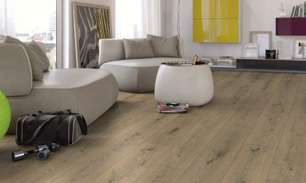COMPASS FLOORS
FLOORING SPECIALISTS
-
CORK
Cork flooring is actually made from the bark of the Cork Oak tree. The cork is sustainably harvested. About every 10 years or so the bark can be harvested from the tree–and then it grows back. The harvesting does not harm the tree. Most cork is grown in the area around the Mediterranean sea. The trees can be harvested after they are about 25 years old.
Floating cork floors are a new product. They work much the same as other floating floors. They have an HDF (high density fiberboard) back and a thin layer of cork glued to the top. They click together with a snap together tongue and groove joint. No glue is required. More often than not they also have a thin layer of cork on the bottom that acts as an insulator. The floating cork doesn’t always work well in bathrooms because the substrate (HDF) swells and buckles when immersed in water for prolonged periods.
What are the properties of cork?
Antimicrobial- Cork resists growth of bacteria and other microorganisms. This makes it a healthy choice if there are allergy sufferers in the home.
Insulation- Cork offers insulation qualities. It’s a great sound insulator. This makes it a good choice in an upstairs room. No more sound of feet walking on floor. It also has some heat insulating properties. It stays warm in the winter. Unlike hardwood floors that can be cold on bare feet cork is wonderfully warm.
Ergonomics- Cork is great for your back! It has enough cushion that it’s like wearing cushiony sole shoes even when barefoot. This is great in a kitchen if you spend a lot of time there.
Much of these properties are due to the structure of the material. Cork has a very open cell pattern with micro air pockets. These pockets make the material spongy. This is also what gives it it’s insulating qualities. Cork will compress with force but it has a memory and will spring back to it’s original shape when the force is removed.
